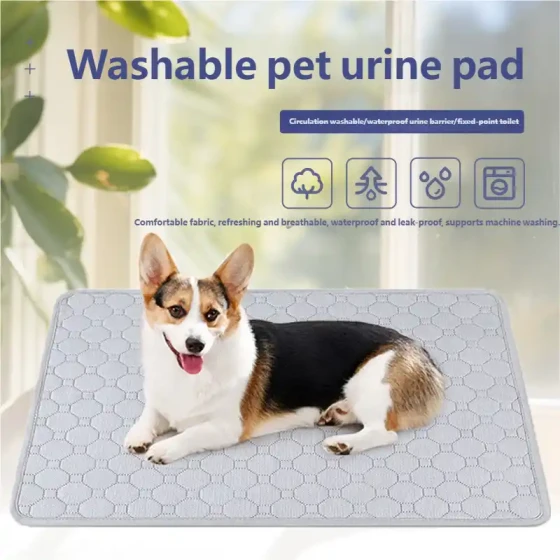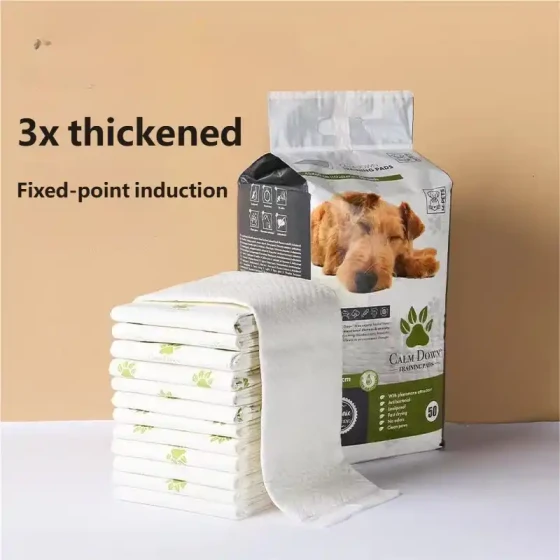How to Judge Whether a Dog Is Fat or Thin

It is better for dogs to be slightly thin than too fat
Different dogs definitely have individual differences, so judging whether a dog is fat or thin cannot be completely based on so-called standards; these data can only be used as a reference. Therefore, if a dog's weight is not significantly different from these standards, then there is no need to worry too much, and we can consider the dog's physique relatively normal. In addition to judging whether a dog is normal by weight, some judgment can also be made based on appearance.
Judging whether dogs and cats are fat or thin is actually quite subjective. Sometimes the judgment varies from person to person. Some veterinarians with a naturally stockier body type may have a higher tolerance for dog obesity. In the United States, there are two most commonly used standards to measure body shape: one is a score from 1 to 5, and the other is a score from 1 to 9, with 1 being the thinnest. For dogs and cats, the 1 to 9 scoring system is used most widely.
The scoring standards for dogs and cats are basically similar. The standard is easier to evaluate for short-haired pets because long fur can easily create visual illusions. 1 to 3 means too thin, 4 slightly thin, 5 ideal, 6 to 9 too fat.
Score 1: Ribs, lumbar vertebrae and pelvis are visible from a distance; no fat can be felt, with obvious signs of muscle loss.
Score 2: Ribs, lumbar vertebrae and pelvis are easy to see; no fat can be felt, with slight signs of muscle loss.
Score 3: Ribs are easy to feel and may be visible. The top of the lumbar vertebrae is protruding and visible. The pelvis is slightly protruding. There is a distinct waistline and a tucked abdomen.
Score 4: Ribs are easy to feel with a small amount of subcutaneous fat. The waistline is easy to see from the top. The abdomen is obviously tucked.
Score 5: Ribs can be felt without excessive subcutaneous fat. The waistline can be seen from the top. The abdomen’s tuck can be seen from the side.

Pay attention to diet and exercise regularly to control the dog's body shape
Score 6: Ribs can be felt with slightly excessive subcutaneous fat. The waistline can be seen from the top but is not obvious. The dog’s abdomen is noticeably tucked; cats do not have a flat abdomen.
Score 7: Ribs are harder to feel, with a lot of subcutaneous fat. There is obvious fat accumulation on the lumbar vertebrae and base of the tail. The dog’s abdomen tuck may be visible; cats have considerable belly fat.
Score 8: Ribs cannot be felt or need strong pressure to feel, with lots of subcutaneous fat. There is a lot of fat accumulation on the lumbar vertebrae and base of the tail. No waistline is visible. The dog’s abdomen is not tucked, cats have obvious belly fat. The abdominal shape may be swollen.
Score 9: Very large fat accumulation on chest, spine, base of the tail, neck, and limbs. Dogs have no waistline or tucked abdomen; cats have extreme belly fat. The abdominal shape is notably swollen.
Generally, it is recommended to keep dogs and cats’ body condition at standards 4 or 5. A good physique can prolong life and reduce the risk of various diseases, including diabetes and other endocrine disorders, heart disease, arthritis, and cancer. Increasing exercise, controlling diet according to food calorie content, or using prescription weight-loss food can help dogs or cats lose weight, but it is also important to arrange and control reasonably. For underweight dogs, check for digestive diseases, and of course, regular deworming is necessary. Afterwards, reasonable diet arrangement is important.





